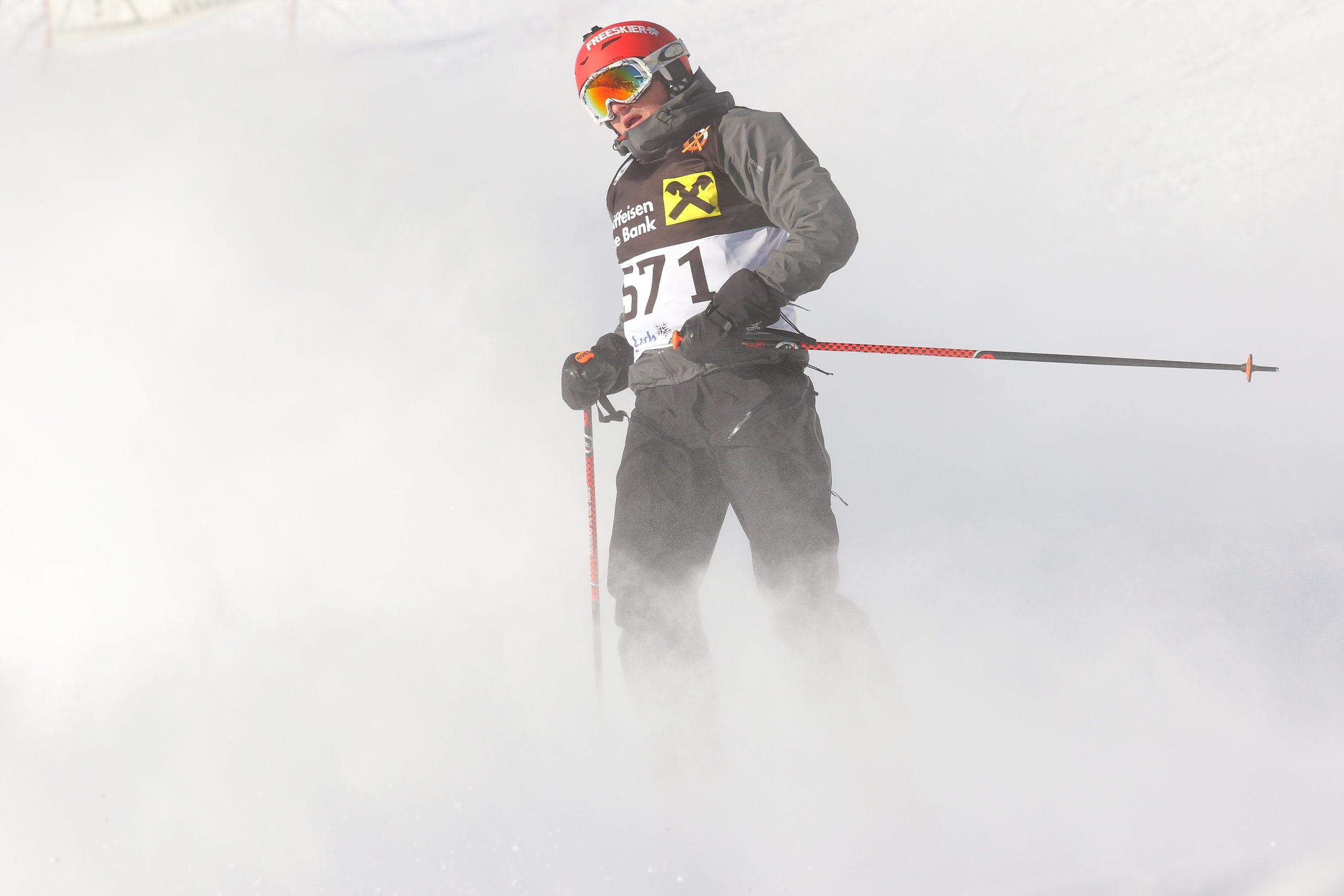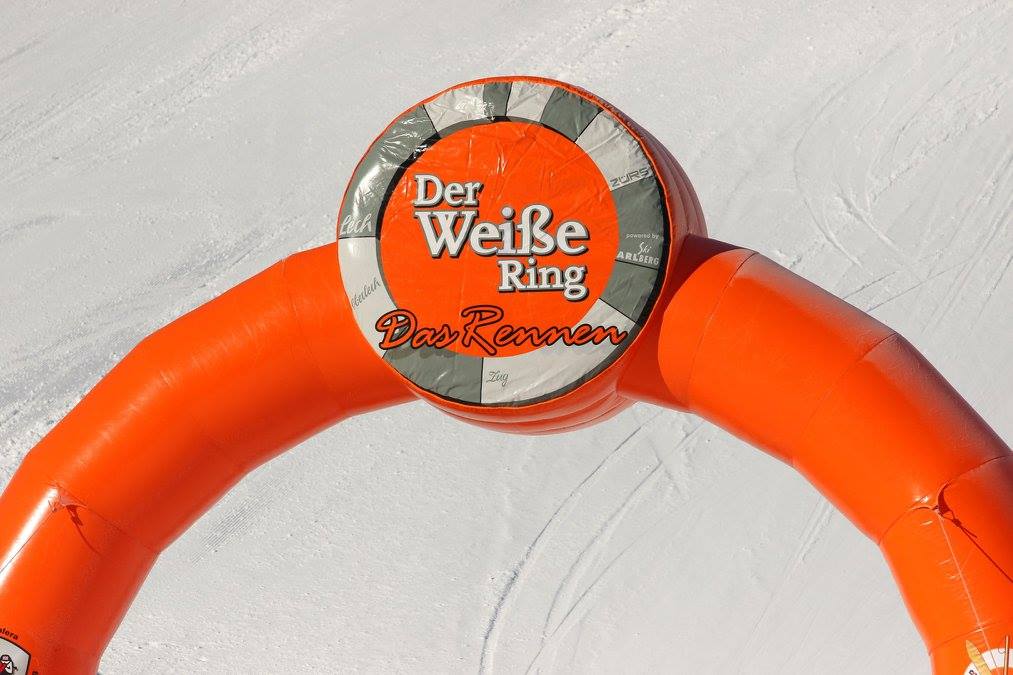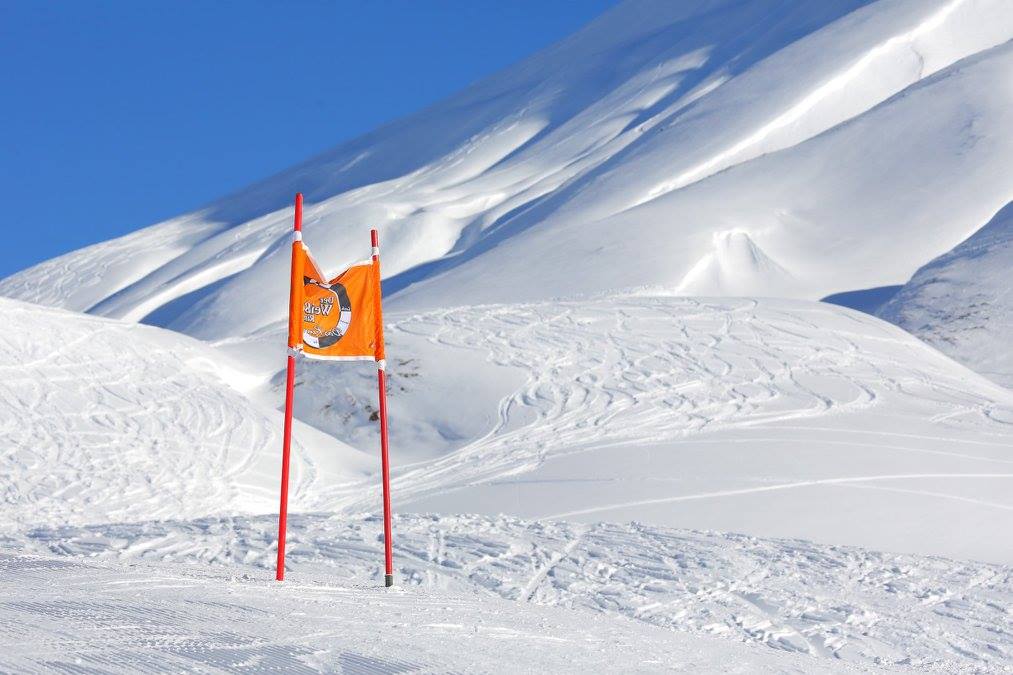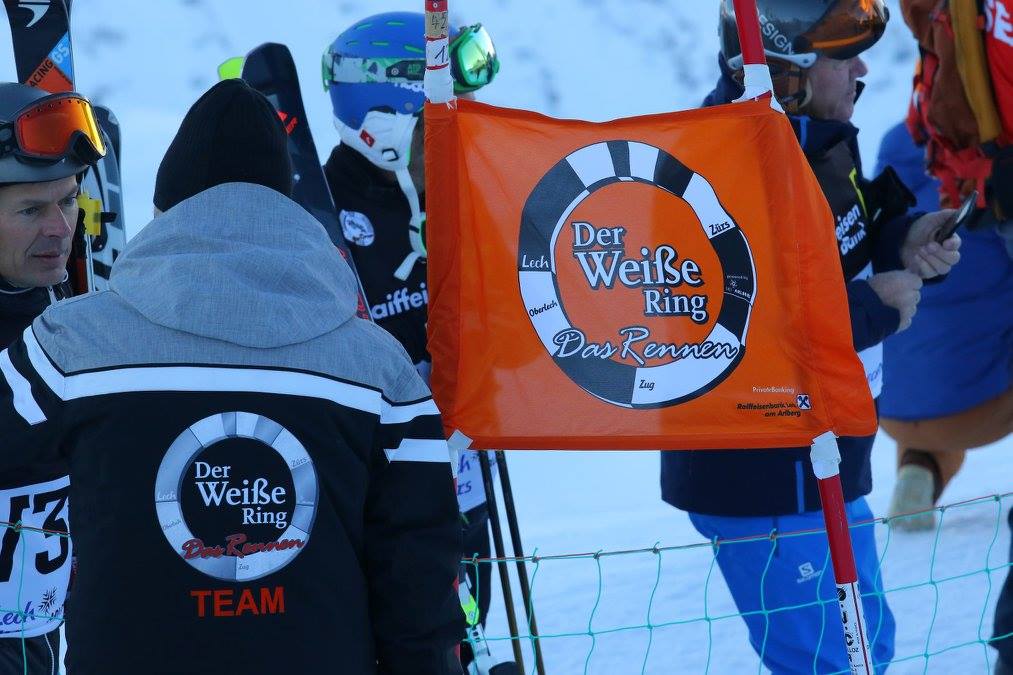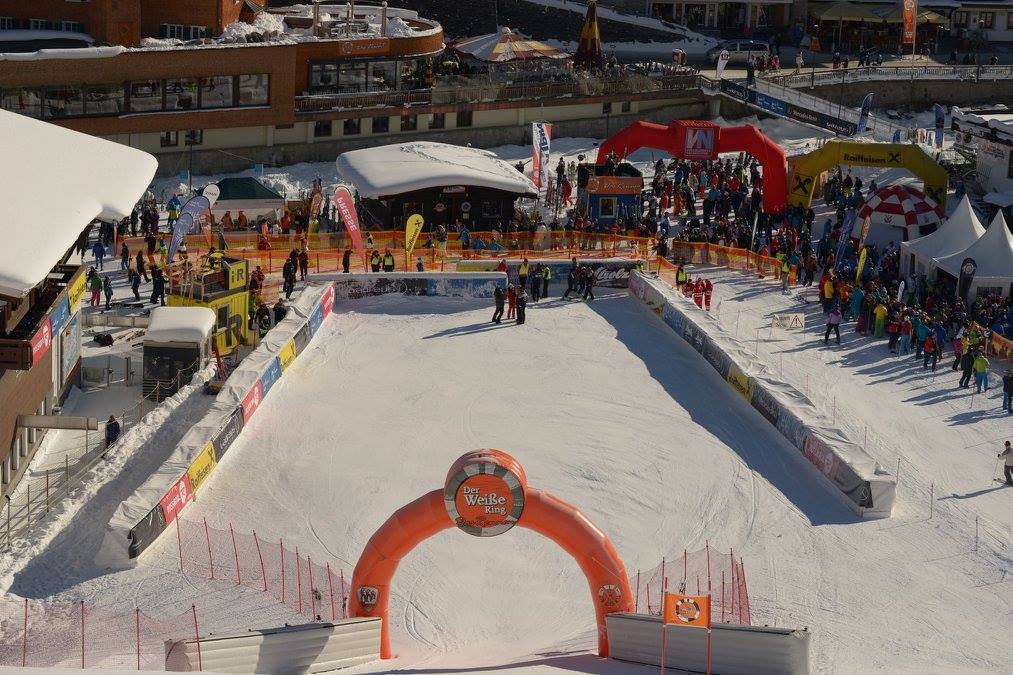DER WEISSE RING
One click, two clicks, and my boots were binded to my skis. I found myself at the starting grit of Der Weiße Ring. Der Weiße Ring is one of the most epic ski races, in fact it is the longest ski race in the world. It is 22 kilometres long and takes the participants from the top of Lech into Zürs, through Zug and back to the bottom of Lech. Over 1000 ski fanatics dare to undertake this adventure, which includes taking eight ski lifts and covering over 5.500 meters of vertical gain. The course record had been set by Markus Weiskopf and sits at 44:10 minutes since 2010.
I had long planned to take part in this pretty special event, but never had the time, so when I had been offered a bib this year, I did not have to think twice and signed up. However, my initial excitement was followed by a few doubts. I was not sure whether it was the smartest of choices to sign up for a ski race that can possibly lead to an injury and take me off running.
After a weekend in London, I returned to Lech. On Friday, the course was opened to visit, study and analyse, in order to find the perfect line. Of course, also I was intending to visit the racecourse and memorizing the gates. However, things turned out slightly different, as my planning was anything but efficient. I had completely lost track of time and missed the course viewing, as I geared up too late and did not have enough time to make the loop. Fortunately enough, I have pretty much grown up in this little village that is located somewhere in the Austrian Alps, so I have been skiing this particular route many, many times in the past. Nevertheless, it is a difference, whether you just “ski” it, or go full throttle down the slopes. I mean that is what I tried to do at least. Anyways, so no course viewing for me and I simply picked up my bib number in the afternoon, which came with a pretty cool free pair of limited edition ski poles. Bearing in mind, an unvisited racecourse and a couple of big running events coming up this year, I decided not to prepare my skis, in order to go faster and especially glide better. In the end that cost me a few seconds, maybe minutes, but it was for the better I think.
Back to the starting grit. The race officially started at 9:00 am. Groups of around 20 skiers have been waived on to the course in stints of 1:40 minute. My starting time was just after 10:00 am. I pulled down my ski goggles and tightened my boots one more time. The commentator counted down: 3, 2, 1 and off I went. After a short climb to the top past Der Weiße Ring sign, which shines on the top of Rüfikopf, I bend my knees and took on my downhill position. The gates were flying past by my side, as my thighs were burning. I have to admit that the little stints in the lifts, done me well, in order to give my legs a little rest. The first section in Lech, as well as the slopes in Zürs went well. The key and most difficult section of the race is “Madloch”, which is known to be icy, hides a few rocks underneath the shallow snow, and is steep and very fast. “Madloch” is doomed to be the place where the wheat seperates from the chaff. I hopped out of the lift. One, two strong pushes with my poles and downhill I went. Halfway through the slope, I suddenly saw a big cloud of snow arising, a ski flying through the air, and black creature sliding down the hill. I had to leave my line, moved right, shouted whether he was alright and on one ear I heard him scream “ja”, as I stormed by. Within no time, I found myself at the bottom of Madloch. I sat down in the final ski lift of the course and it was only then when I only realised what had just happened. This section was a pretty wild ride, indeed. Once I reached the top of Kriegerhorn, I knew I was almost there, and it was only a matter of brining it home safe and sound. Before turning into the final part of the course, I skied past the hotels in Oberlech, which was one of my favourite sections, with a number of spectators sheering us on from the side.
The finish line was in sight. There were a few more meters to go. And, then I crossed the line, and as I carved the edges of my skis into the snow, I slowly came to stop. I had just completed my very first episode of Der Weiße Ring. The finish area was very similar to the one of the big world cup races that I would watch on TV. It felt pretty special and I was proud to have finished the race, but above all thankful that I did not injure myself. My final time was 53:21 minutes. I was happy, though my sportsmanship already pushes me towards the next edition, as I know I can undercut this time and finish Der Weiße Ring in less than 50 minutes. But, in order to do so, it needs a little more German efficiency, and an improved pre-race regime.
